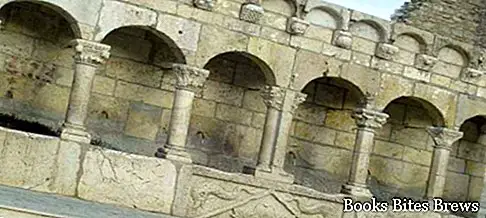What to see in Isernia, itinerary including the main monuments and places of interest, including the Fraternal Fountain, the Cathedral and the National Paleolithic Museum.
Tourist information
City famous for the processing of stone and for the presence of lively industrial food and craft activities concerning largely the production of ceramics and lace, Isernia is the provincial capital of Molise and extends in an elevated position between the Carpino and Sordo rivers .
Ancient Samnite center, Aesernia was a Roman colony starting from 263 before Christ, in the early Middle Ages it was devastated by Saracen pirates and subsequently sacked and destroyed several times.
The tour of the historic center can be started from the Fontana della Fraterna, located in Piazza Celestino V, which is a beautiful fourteenth-century building with the appearance of a six-arched loggia, equipped with six jets of water and built with limestone blocks.
The name derives from the fact that it is located in the same district where the Confraternity was established, established in 1289 by Pietro Angelerio, who became pope with the name of Celestino V.
Walking along Corso Marcelli you reach the Cathedral, located in Piazza Andrea d’Isernia.
What see
The Cathedral of Isernia, built on a third century BC temple, was devastated by an earthquake and rebuilt in 1837.
Inside there are a remarkable Byzantine-style table and sacred art objects in the sacristy.
To the left of the church is the bell tower, which includes at its base an entrance hall containing four Roman statues.
The remains of a pagan temple are visible on the sides of the church.
Continuing to walk along Corso Marcelli you reach the National Paleolithic Museum, housed in the former convent of Santa Maria delle Monache, whose Romanesque church, which has been almost completely destroyed, remains the portal and bell tower.
Recommended readings- Agnone (Molise): what to see
- Molise: Sunday day trips
- Castelpetroso (Marche): Sanctuary of the Addolorata
- Larino (Molise): what to see
- Isernia (Molise): what to see
Inside the exhibition rooms there are numerous finds found in the place where the Paleolithic village of Isernia was located, which constitutes the oldest human settlement in Europe, characterized by the presence of testimonies relating to the lifestyle that Homo erectus had given about a million years ago.
In addition, other archaeological materials are also preserved, including interesting Roman reliefs.
Going down Via Roma you come across the church of San Francesco which, rebuilt in the eighteenth century, has preserved the remarkable Romanesque portal of the original building.




